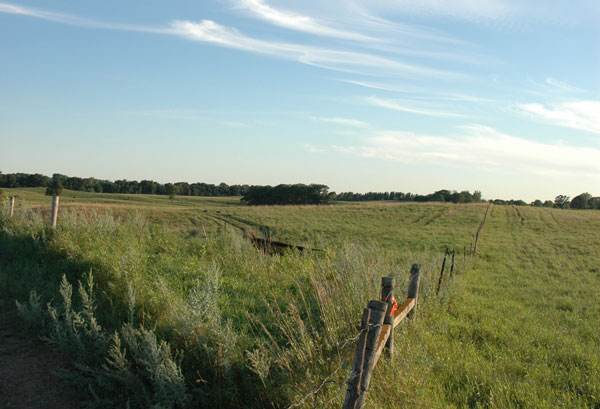Alfalfa Freeze Warning
With chillier weather due over the weekend, Bruce Anderson, Extension forage specialist at the University of Nebraska, is offering his perspective to alfalfa growers on the potential outcome and appropriate actions if a freeze does occur.
April 6, 2012

Worried about a freeze on alfalfa? Based on all the calls/emails I've received the past couple of days, at least it probably has crossed your mind. Below is my best effort to "preview" the outcome and appropriate actions if a freeze does occur.
A "light" frost/freeze where temps don't go below around 28 for very long is likely to singe alfalfa tops a bit and set back growth rates for a while but plants will grow out of it. No need to cut although some growers seeking very high quality might do so if standing yield is high enough to justify harvest with the understanding that plants will be weakened by early cutting and should be allowed extra time to recover before the next cutting.
An extreme freeze around 20 or less like in 2007 likely will freeze plants all the way to the ground and they will collapse soon afterwards. Harvest is warranted if yield is sufficient but must be done immediately; once plants collapse much of the biomass will be unattainable and leaves will shatter quickly from those stems that still can be cut. Experience in 2007 showed little or no benefit to regrowth by cutting or shredding damaged tissue since the freeze was so thorough that plants reacted to the killed tops just as they would if tops were killed by cutting instead of freezing.
A freeze that penetrates about halfway down into the alfalfa canopy makes decisions more difficult. Cutting will weaken plants that weren’t nearly ready to cut anyhow. But uncut plants will be confused, some continuing to grow, others creating new shoots from aboveground stems, and others with new shoots coming from the crown. And much of that regrowth will be slow to initiate. If yield is high enough to justify harvest, probably should be cut, knowing that extra time will be needed for recovery before the next cutting. If yield of standing crop is low, probably best to just wait out the delay in regrowth. It will be hard to justify the time and expense of cutting/shredding with no immediate harvestable crop.
After a freeze that causes visible damage to alfalfa tissue, be extra observant of how the plants respond. In 2007, some regions experienced significantly higher than usual damage from foliar diseases and sometimes, insects, on regrowth following the freeze. It was speculated at that time that weakened plants may have been less able to resist these pests or that the abundant amount of dead alfalfa plant tissue on the ground or surrounding the regrowth provide a more desirable environment for pests to develop.
You May Also Like



